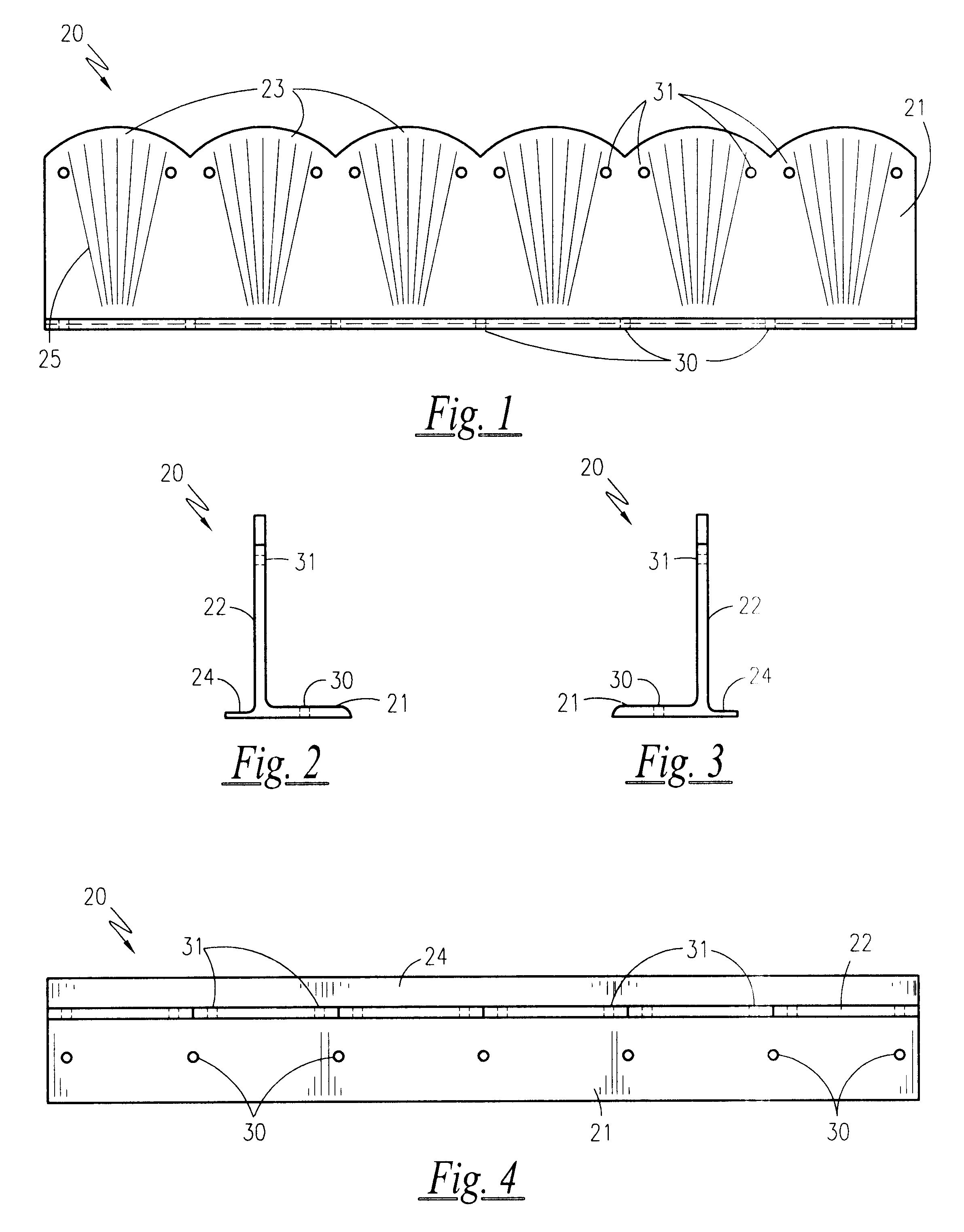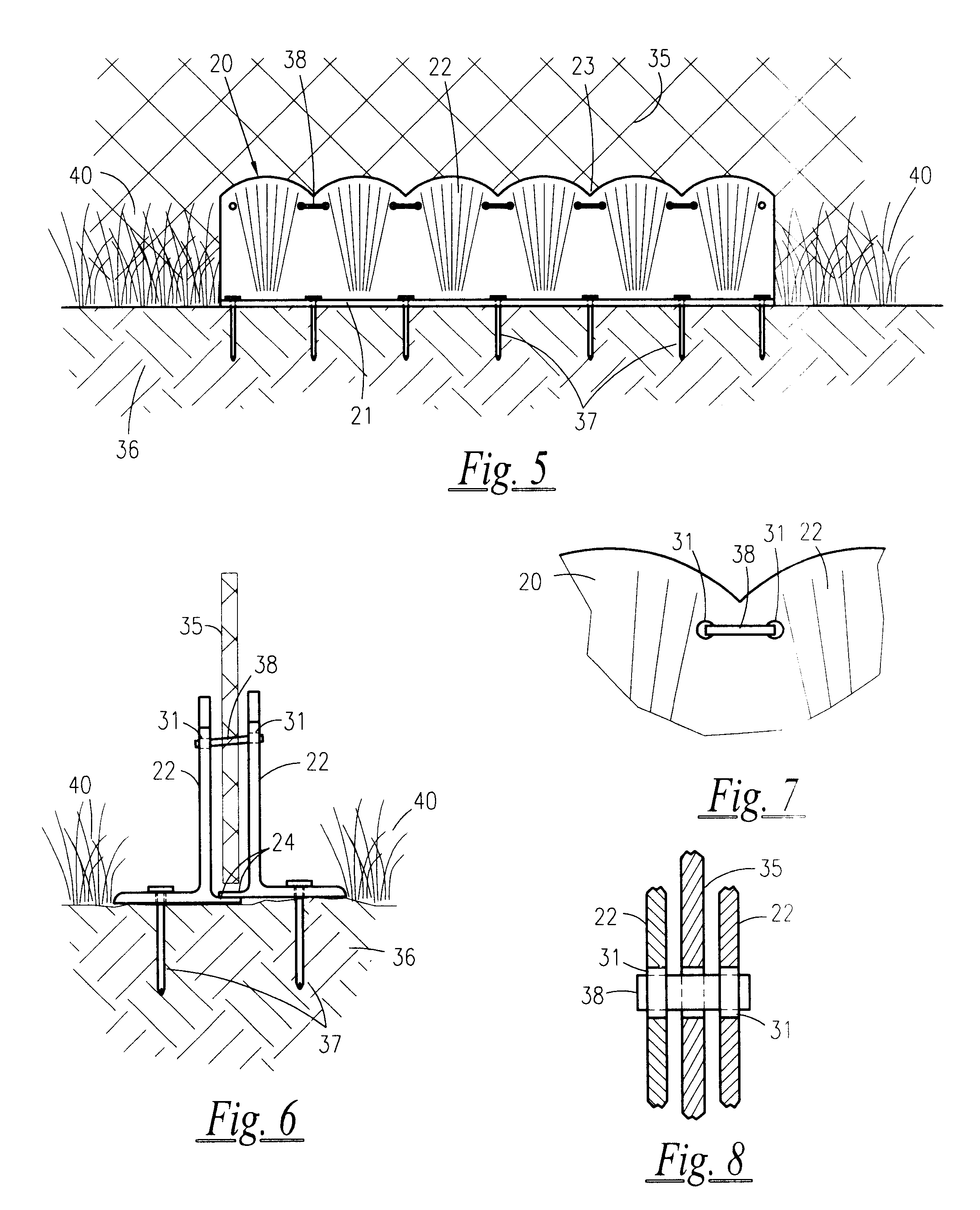Fence guard
a chain link fence and guard technology, applied in the field of chain link fencing, can solve the problems of high cost of methods, difficulty in removing even with conventional gas-powered line trimmers, and inability to meet the requirements of construction,
- Summary
- Abstract
- Description
- Claims
- Application Information
AI Technical Summary
Benefits of technology
Problems solved by technology
Method used
Image
Examples
Embodiment Construction
of the Figures
Referring now to FIGS. 1-4, depicted is a fence guard 20, according to the preferred embodiment of the present invention. The fence guard 20 is generally elongated and has an L-shaped cross-section defining a horizontal growth shield portion 21 having a generally perpendicular orientation with a vertical fence shield portion 22. The fence shield portion 22 incorporates an aesthetic design in which various colors, textures and styles can be incorporated in order to suit the taste of the user. For display purposes, the fence shield portion 22 is depicted as having a series of arcuate ridges 23 along its upper edge. An overlap strip 24 runs the length of the fence guard 20 and extends from the point of intersection between the growth shield portion 21 and the fence shield portion 22 in a direction in linear alignment with the growth shield portion 21. A series of spike apertures 30 spaced along the growth shield portion 21 and a series of fence securing apertures 31 space...
PUM
 Login to View More
Login to View More Abstract
Description
Claims
Application Information
 Login to View More
Login to View More - R&D
- Intellectual Property
- Life Sciences
- Materials
- Tech Scout
- Unparalleled Data Quality
- Higher Quality Content
- 60% Fewer Hallucinations
Browse by: Latest US Patents, China's latest patents, Technical Efficacy Thesaurus, Application Domain, Technology Topic, Popular Technical Reports.
© 2025 PatSnap. All rights reserved.Legal|Privacy policy|Modern Slavery Act Transparency Statement|Sitemap|About US| Contact US: help@patsnap.com



